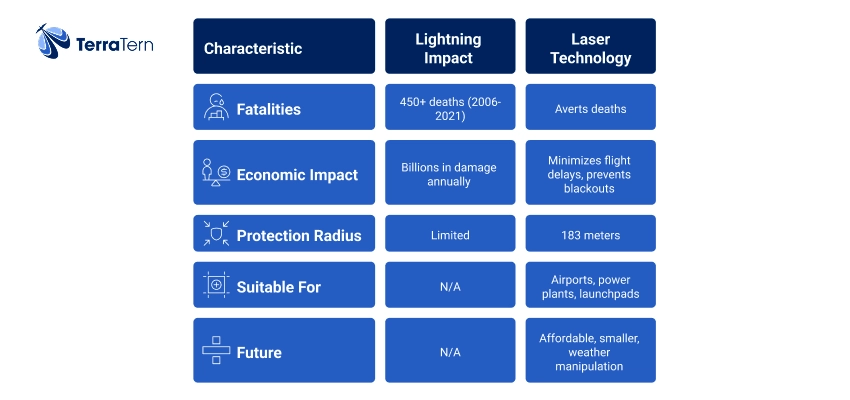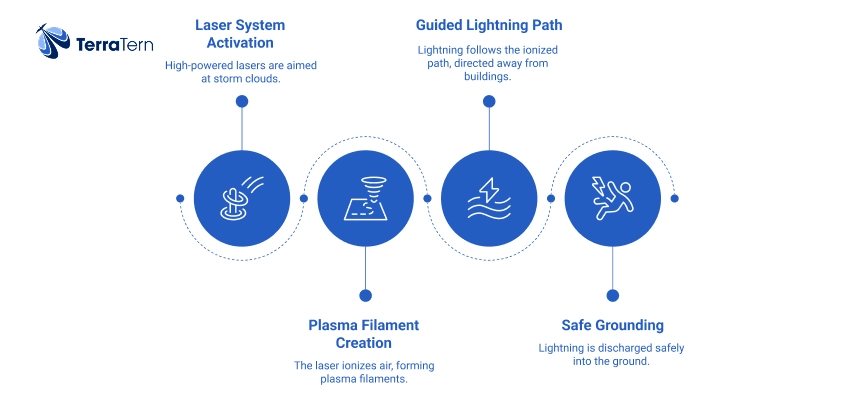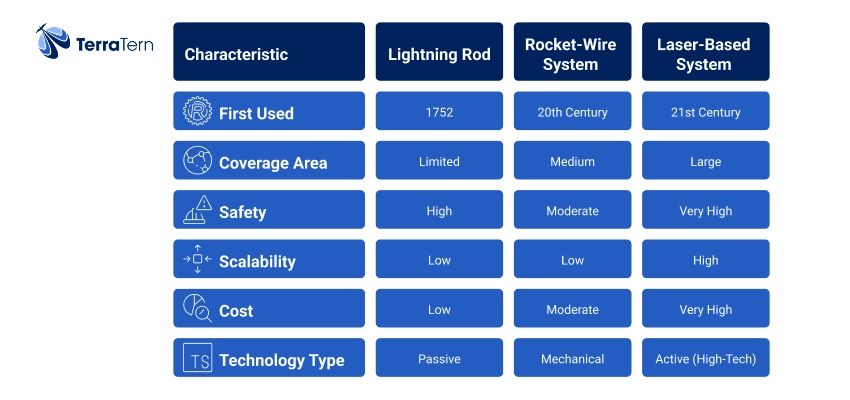Key Highlights
- Did You Know? (2024–2025 Latest News)
- What Is Striking Back at Lightning with Lasers IELTS Mentor Answers?
- How Lasers Are Changing Lightning Protection: The Science Explained
- Traditional Lightning Protection Methods vs. Laser-Based Systems
- The Physics Behind Laser-Guided Lightning
- How Does Laser Lightning Control Work?
- Striking Back at Lightning with Lasers IELTS Mentor Answers: Why It’s a Top IELTS Topic in 2025
- IELTS Reading Tips for “Striking Back at Lightning with Lasers IELTS Mentor Answers”
- Common IELTS Question Types in This Passage
- Step-by-Step Answers and Explanations: Striking Back at Lightning with Lasers IELTS Mentor Answers
- Real-World Applications and Future Prospects
- Conclusion: Why This Passage Matters for IELTS and Beyond
Lightning still brings havoc and loss of lives in the world. Scientists have since ventured into advanced laser technology to monitor and direct the lightning. A significant advance was made in 2024, when a team in Switzerland reportedly concretely proved this method in a real storm: the first time laser-controlled lightning successfully worked outside. This breakthrough can safeguard the key infrastructure, including airports, power generation stations, and skyscrapers, against lightning attacks. Better still, it could lead to interactive meteorology, whereby human beings can control the weather patterns.
This blog dwells upon the striking back at lightning with lasers IELTS mentor answers that draw on this theme. You will learn to approach similar questions, better understand scientific texts, and improve your IELTS Reading score. This guide contains the latest scientific information, professional tips and answers to detailed sample questions to help you pass a successful test day.
Did You Know? (2024–2025 Latest News)

Here are the latest facts and news about striking back at lightning with lasers IELTS mentor answers:
-
Swiss physicists have directed lightning over 50 meters using high-powered lasers in 2024.
-
This practical experiment enhanced lightning protection during storms in a significant way.
-
The protection radius was expanded to 183 meters, with a broader protection scope.
-
The laser system utilised in the experiment was about 2 billion dollars.
-
It is too large to be usable – the equipment was as big as a large car.
-
The old-fashioned lightning rods, created in 1752 by Benjamin Franklin, are widespread nowadays.
-
Nevertheless, they have no wide coverage and do not suit large infrastructures well.
-
Lightning was the cause of death of more than 450 individuals in the United States between 2006 and 2021.
-
Lightning has cost billions of dollars annually in infrastructure and property damage.
-
The first effort to control lightning using lasers was made in 1999 by scientists; however, they could not observe the effect outdoors.
-
Successful outdoor experiments are made possible by recent advances in technology.
-
Diverting lightning with lasers: Tests were conducted in Switzerland at the Sentis Mountain, proving that this operation could be performed safely.
-
Such experiments have confirmed that lasers have the potential to become a viable approach to lightning control.
-
Researchers are trying to make the systems less expensive, smaller, and less complicated to install.
Being up to date with the latest news about striking back at lightning with lasers IELTS mentor answers can be crucial.
Also Read: New Glacier IELTS Reading Answers: Latest Guide & Tips
What Is Striking Back at Lightning with Lasers IELTS Mentor Answers?

This section gives you a quick overview of the striking back at lightning with lasers IELTS mentor answers:
-
This is taken as a reading test in the academic field of IELTS.
-
It dwells on a future scientific invention of laser-controlled lightning.
-
The text illustrates the comparison of laser technology and conventional lightning protection technologies.
-
It checks your exam skills in appreciating the cause and effect in science.
-
It will also be necessary to find contrasts between the new and the old technologies.
-
A complicated vocabulary in the field of physics and meteorology is used in the passage.
-
It puts your understanding, word knowledge and deductive capability to the test.
-
This kind of passage is typically used in the scientific part of the IELTS Reading test.
-
Using it in practice can prepare you for technical, innovation-based questions.
How Lasers Are Changing Lightning Protection: The Science Explained
The science behind striking back at lightning with lasers IELTS mentor answers is explained below:
-
In thunderstorms, lasers are used to ionise a pathway in the air.
-
Plasma filaments, as they are referred to, are the channels along which lightning travels.
-
This lightning will safely take the path made by the laser to the ground.
-
This minimises the probability of it hitting the buildings, people, or sensitive equipment.
-
This is a far safer way than lightning rods or a rocket-wire installation.
-
It is also more scalable in receiving larger and more complex coverage.
-
Subareas can be covered by laser-guided lightning control rather than the traditional methods.
-
This makes it suitable for critical operation places such as airports, sports arenas and launch pads.
-
The technology provides a contemporary lightning protection system in hazardous areas.
Traditional Lightning Protection Methods vs. Laser-Based Systems

This table gives a brief overview of striking back at lightning with lasers IELTS mentor answers methods:
|
Feature |
Lightning Rod |
Rocket-Based |
Laser Technology |
|
First Used |
1752 |
20th Century |
21st Century |
|
Coverage Area |
Limited |
Medium |
Large |
|
Safety |
High |
Moderate |
Very High |
|
Scalability |
Low |
Low |
High |
|
Cost |
Low |
Moderate |
Very High |
|
Technology Type |
Passive |
Mechanical |
Active (High-Tech) |
-
Conventional rods are cheap and narrow.
-
The systems using rockets are expensive and difficult to manage.
-
The lasers provide real-time accuracy and greater coverage.
-
Lasers also do not create debris or a physical hazard.
Also Read: IELTS Advantage Disadvantage Essay: Structure, Tips & Ans
The Physics Behind Laser-Guided Lightning
The physics part of the striking back at lightning with lasers IELTS mentor answers is explained below:
-
Lasers produce strong phenomena, as they produce plasma filaments in the air.
-
Such filaments ionise and warm up the atmospheric air around.
-
When air is ionised, it is conductive and permits an electric current.
-
This forms a channelled route to the lightning to ground, safely.
-
This, in totality, is referred to as laser filamentation in physics.
-
It was initially proved in laboratories under controlled conditions.
-
This was later demonstrated successfully in an outdoor environment on the Säntis mountain in Switzerland.
-
These experiments showed that lighting can be steered using lasers in actual storms.
-
Our approach toward building and infrastructure protection may change in the process.
How Does Laser Lightning Control Work?

This section gives you a quick understanding of striking back at lightning with lasers IELTS mentor answers, and how things work:
-
Flashes of lasers with high energy concentration are directed toward clouds of the storm.
-
These bursts form plasma filaments that are superheated streams of ionised gas.
-
The filaments ionise the air around, leaving it electrically conductive.
-
This gives a definite way for lightning to go--far away into danger-free places.
-
The lightning is then carried safely to the ground in a laser-guided way.
-
Due to this, it does not target buildings, towers or even open spaces directly.
-
It lowers the risk of fires, power failures, and injuries caused by lightning.
-
The complicated science is made less difficult with the help of a visual step-by-step illustration, which is beneficial to IELTS readers.
-
Ideal practice: for visual learners with similarities in preparing scientific and technical reading passages.
-
Blogs like this with infographics provide a better understanding and retention of principal processes.
Striking Back at Lightning with Lasers IELTS Mentor Answers: Why It’s a Top IELTS Topic in 2025

Why is striking back at lightning with lasers IELTS mentor answers an IELTS topic? Read this section to find out:
-
The text is at the boundary of current science and its applicability to the real world, which is perfect material for studying with IELTS.
-
It checks your abilities to skim and scan to get the gist of the information and key data.
-
Questions usually involve proper identification of names, years and scientific terminologies.
-
Features differences between the ancient procedures and contemporary breakthroughs.
-
It has technical terms such as ionisation, filamentation and neutralising.
-
Excellent illustration of Cambridge-pattern scientific reading extracts applied in real-life tests.
-
Exposure to long and thick reading material improves the ability to stay longer on a reading session.
-
Promotes logical reasoning by checking cause-and-effect and comparison relationships.
-
Increases confidence in related issues on climate, innovation, and engineering.
-
The passage can be practised to enable you to improve your band score in the IELTS Reading section.
Also Read: How to Prepare for IELTS in 2025? New Experts Complete Guide
IELTS Reading Tips for “Striking Back at Lightning with Lasers IELTS Mentor Answers”
Here are the best reading tips for striking back at lightning with lasers IELTS mentor answers:
-
It is good to start by skimming every paragraph to discover the central idea.
-
Skim the text to look for names, dates, numbers and comparisons.
-
Place the technical words like ionisation and neutralising in bold letters or underline them.
-
Pay attention to cause-and-effect relations, which are rather usual in this passage.
-
Train headings and paragraph summaries to match correctly.
-
Indent keywords in question stems, then identify them in the passage.
-
Be alert to the words that are in paraphrased form; these words are frequently present in the answer options.
-
Take your time; read slowly to avoid missing the meaning nuances.
-
Do lots of practice in familiar science-related IELTS passages.
Vocabulary and Synonyms to Watch For
Here are some important words and synonyms to watch out for in Striking Back at Lightning with Lasers IELTS mentor answers:
-
Neutralising = cancelling out an electric charge.
-
Ionisation = conversion of atoms or molecules to ions.
-
Discharge = electric current or lightning that flows out or spills out.
-
Meteorology - the science of weather and atmospheric conditions.
-
Laser-induced = caused or instigated by the energy of a laser.
-
Filament = a long, thin thread-like passage which receives electricity.
-
Lightning rod = metal rod that helps guide lightning harmlessly to the ground.
Knowing these words will prevent you from recognising paraphrased answers in the test on striking back at lightning with lasers IELTS mentor answers. The standard terms are also repeated in the reading questions on IELTS.
Common IELTS Question Types in This Passage

Here are some common types of questions in striking back at lightning with lasers IELTS mentor answers:
-
In multiple-choice questions, you are evaluated on the ability to grasp important information and facts.
-
Summary completion involves completing sentences with words from the reading text.
-
Sentence completion measures how well you can complete sentences.
-
Matching paragraph information requires you to match the details, which should be compared to the related paragraph.
-
The Yes/ No/ Not given questions test your knowledge of facts.
-
Matching headings tests your ability to get the key ideas of paragraphs.
-
Take practice to get acquainted with the nature of information testing.
-
Prepare to be acquainted with these structures by looking at some of the previous Cambridge IELTS tests.
Also Read: IELTS Course Fee: Latest Guide to IELTS Course Duration and Fees
Step-by-Step Answers and Explanations: Striking Back at Lightning with Lasers IELTS Mentor Answers
tect
Here are step-by-step explanations for striking back at lightning with lasers IELTS mentor answers:
Q1: What is the main topic of the passage?
A laser-based technique has been developed to control lightning strikes. (Paragraph 2)
Q2: What does lightning do to buildings?
It causes significant structural damage during thunderstorms. (Paragraph 1)
Q3: Who funded the research in Florida and New Mexico?
Both research teams received funding from the same source. (Paragraph 3)
Q4: What is a key drawback of the rocket method?
It is costly and has a high failure rate in practice. (Paragraph 4)
Q5: Why is the laser method considered better?
It is safer and may allow future control of weather events. (Paragraphs 5 & H)
Q6: What is the current cost of laser systems?
The technology costs around $2 billion today. (Paragraph 5)
Q7: What was the first real-world success with lasers?
The outdoor experiment on Säntis Mountain proved the method works. (Paragraph 6)
Q8: What do scientists aim to improve next?
They want to reduce the size and cost for practical use. (Final paragraph)
Real-World Applications and Future Prospects

Here are some real-world applications and future prospects for striking back at lightning with lasers IELTS mentor answers:
-
Lightning delays in flights could be minimised using airport services.
-
Launchpads can help avoid the high losses during rocket launches.
-
Electric grids and power plants could reduce the possibility of having blackouts.
-
Sporting activities and musical concerts can continue outside when a storm occurs.
-
To scale worldwide, the technology has to be affordable and smaller.
-
Humankind might have the power to manipulate rain, hail or even storms.
Also Read: IELTS Score for Germany: Work & Study Requirements
Conclusion: Why This Passage Matters for IELTS and Beyond
The text striking back at lightning with lasers IELTS mentor answers, brings to light real-world scientific achievements that are engaging and pertinent to contemporary lives. It presents the latest atmospheric science findings and how lasers would change lightning protection and weather. To an IELTS student, this text is more than a source of knowledge but a source of literacy skills, reading, interpreting complicated concepts, and scientific thinking.
It also increases awareness about the benefits of innovation in safeguarding facilities such as airports, the power grid and launch pads against natural hazards. What once seemed a futuristic prospect, laser weather control may soon determine how cities react to storms. The practice of this passage will introduce the candidates to the scientific language and topics frequently found in the IELTS Academic Reading section, and at the same time, enhance their knowledge of the science and technology advancements in the real world. Contact TerraTern for more information!






